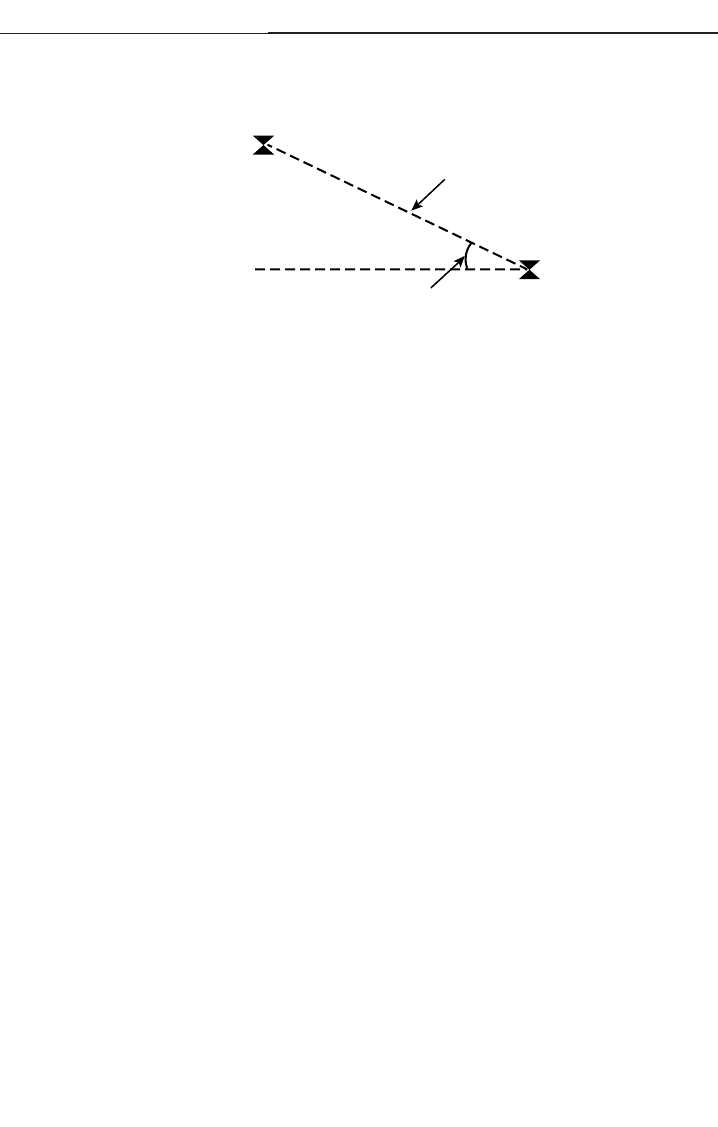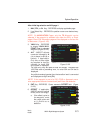
3-78
GNS-XL Flight Management System
Rev. 0
Oct/96
Using Automatic (AUTO) FPA
The (AUTO) mode is pro-
vided to link together
descent waypoints that
have Cross-At type con-
straints and provide a com-
puted Flight Path Angle
between them. (Figure 3-
128)
The (AUTO) mode may be
selected ONLY if the cho-
sen waypoint has a Cross-
AT type constraint pro-
grammed. All Cross-AT waypoints that are a part of a STAR or
APPROACH are automatically put into (AUTO) mode when the pro-
cedure is retrieved from the database and loaded onto the Active
Flight Plan.
If the waypoint prior to the selected (AUTO) FPA waypoint has a
Cross-AT-or-ABOVE, Cross-AT-or-BELOW, or Cross-BETWEEN
constraint programmed, an automatic angle is assigned and will be
the same angle as the programmed Default Angle on VNAV DATA
Page. Vertical Deviation is provided at the programmed angle when
the waypoint becomes the Descent Reference Waypoint.
NOTE: If no ALT constraints are programmed before the selected
(AUTO) FPA waypoint, the (AUTO) FPA is the same as the (DEF) FPA.
Unless an FPA is programmed at a waypoint, the system uses the
(DEF) FPA to the first waypoint on the flight plan with an altitude con-
straint to establish a #TOD point. To help establish #TOD, the sys-
tem will automatically load the destination airport elevation on the
flight plan, provided the flight plan was not obtained from AFIS. An
altitude constraint and FPA must be loaded using the ENT Key to
establish a Path Descent and activate Vertical Deviation to any way-
point except a (DB) WPT.
System Operation
WPT1
10000
WPT2
5000
(AUTO)
DESCENT PATH
AUTOMATIC ANGLE
Figure 3-128


















